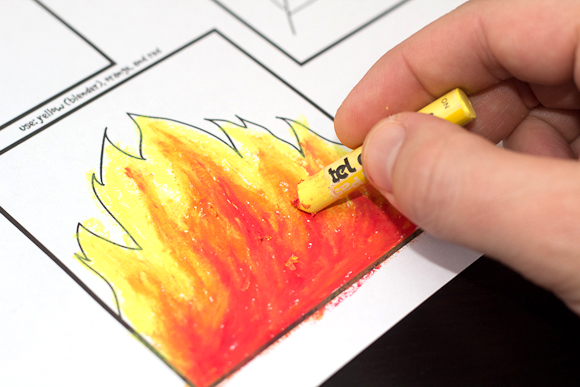In this article, we'll share with you six amazing facts about oil pastels that we hope can help you get excited in learning how to use it. Let's get to it!
Fact 1: A short, yet colorful oil pastel history
It was invented as a high-quality crayon that combined a wide and vibrant color range and a unique, soft malleability. Oil pastels first appeared with Sakura Cray-Pas in 1925 from Osaka, Japan. The term "Cray-Pas" came from the company's invention of combining non-toxic crayons and pastel pigments, eliminating dust while managing to keep the strength and opacity of traditional soft pastels.
Fact 2: Even if you are new, start with quality pastels
When deciding on the oil pastels you should buy, consider oil pastels that are softer and easier to blend together.
Start with a small set of high-quality oil pastels and that start expanding your range by purchasing individual sticks from artist-quality brands.
Fact 3: They have interesting similarities with other medium
Did you know that oil pastels have very similar characteristics with soft pastels and crayons?
Since a component of oil pastels is an oil binder, oil pastels are relatively less powdery than soft pastels, making it easier to blend using just your finger or a blending stump. Additionally, since it is oily, oil pastels can be layered easily like soft pastels.
Similarly, oil pastels behave much like crayons when laid out on a drawing surface. But instead of achieving a crayon-like drawing, oil pastels become more buttery when layered and eventually behaves much like paint.
Fact 4: There are plenty of techniques to enjoy and master
The first oil pastel technique you can do is creating an underpainting. Since it is acting as the base, make sure that your underpainting is loose so you can add a layer of local colors on top of it later on.
Second technique is layering with colors. To achieve perfect depth in value and in color, make sure your colors are balanced and layered.
The third technique is using your oil pastels in slowly building up your applications. When you add large quantities of pastels a little too quickly, this can lead to a muddied artwork and you don't want that!
We invite you to master the rule of R3s by watching this video below!
Fact 5: When blending your oil pastels, take note of these three steps
The first option is to pre-blend your oil pastels. Pre-blending requires combining your oil pastel colors together on a palette before applying it to your canvas. Use a palette knife to cut pieces off your oil pastel stick and use the same knife to combine the two or three different colors together. What will result is a pasty, oily paint that you can apply to your canvas using the same knife or your finger.
The second option is to blend your oil pastels directly on your canvas. Apply one color of oil pastel on your canvas before applying the second one. Use a tool to blend the two colors together until the two edges are smooth.
And for the third option, you can color mix or overlay your oil pastels directly on your canvas. This is quite similar to the second option, but only this time, you are blending larger areas of colors together. Start by applying a generous layer of oil pastel color to your canvas followed by a second layer of a different color. Add additional layers and blend until smooth and once you have achieved your desired hue.
Fact 6: You can easily keep the mess under control!
Before you start working with oil pastels, make sure your work table is covered with paper towels and you have enough sheets to use as you go along.
Making sure you have paper towels by your side is crucial because oil pastels can quickly get on your fingers. Save your clothing from any disaster!
If you do not want to use paper towels, an old rag or any old article of clothing you have no plans of using will definitely do. These are good for wiping off yourself and for cleaning your sticks of oil pastels too before storing them back in their boxes.
And if you really want to avoid the mess, there are those who wear plastic gloves on their hands. It might work the same magic on you!
And now's your turn!
Here at Art Smart, we accept students as young as 4.5 years old and above. Kindly see our schedule below of art classes for your reference.
Thank you and we hope to see you all in any of our studios!








 RSS Feed
RSS Feed
